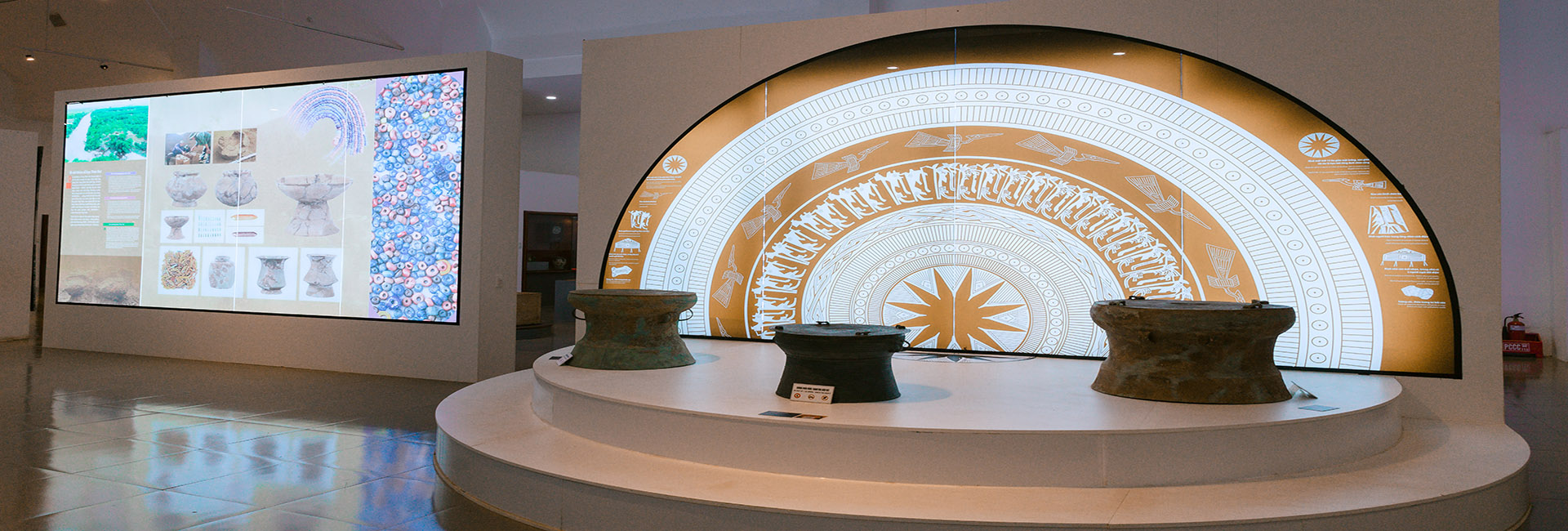BUON MA THUOT PENITENTIARY, THE REVOLUTIONARY SCHOOL OF STEADFAST LOYAL COMMUNIST SOLDIERS
The birth of the Communist Party of Vietnam marked an important turning point in the national history, leading to strong development of people's revolutionary movement.
After the Nghe Tinh Soviet uprising, the colonial government tried to suppress and thoroughly implement the policy of exile for political prisoners. Right while the revolutionary movement was being suppressed in many places, the Resident-Superior of Annam (Central Vietnam) ordered the Legation of Dak Lak to urgently build Buon Ma Thuot Penitentiary.
In 1930, the Penitentiary was built with rudimentary materials such as wooden frame, bamboo walls covered with straw- mixed soil, thin cement-plastered outer shell, and thatched roof. However, the Resident-Superior of Annam objected to this structure and material and forced it to be demolished to rebuild a more solid Penitentiary.
In the summer of 1931, construction began. By the end of November 1931, the Penitentiary was completed on a nearly 2-hectare area, including 6 collective prison blocks, a row of cells, and the other items such as a kitchen, dining room, medical house, office area and factory block.
The harsh penitentiary regime did not oscilliate the iron will of the communists, but on the contrary, this place became a revolutionary school, where to train the red seeds for the Vietnamese revolution.
The revolutionaries fought directly in various forms such as establishing a Negotiation Board, a Prisoner Leadership Board, organizing the struggle against torture and beatings; demanding rights within the framework of political prisoners; meanwhile, secret organizations implemented concurrently promoting the propaganda of Marxism-Leninism, organizing prison breaks and starting to build revolutionary bases.

In the memoirs of political prisoners at Buon Ma Thuot Penitentiary, it is easy to see the images of steadfast revolutionaries, special teachers at the Special School in Dak Lak Plateau:
In politics, there was comrade Tran Tong, who was likened to a living Lenin book. Every day, he reviewed each section of the book Marxism-Leninism, read it to his comrades in French, then translated it into Vietnamese for them to study. This was a valuable document for political prisoners in the Penitentiary at that time.

Comrade Tran Tong
Together with comrade Tran Tong, comrade Nguyen Xuan Linh and comrade Ngo Tuan were tasked to draft teaching content of four steps of work and experience in mobilizing the masses.
Comrade Tran Huu Duc was assigned to propagate and train revolutionary ethics, especially sacrifice and dedication of Party members.
In culture, comrades Le Chuong, Truong Van Hoan and Le Vien taught writing so that they knew how to write leaflets, create slogans and write newspapers articles.

Comrade Le Chuong
Comrade Nguyen Nang Do taught French, comrade Ho Tung Mau taught Cantonese, and comrade Phan Dang Luu was the first person to learn Ede to communicate with soldiers and officials of ethnic minorities, to influence them and to publish the newspapers “Yuăn-đê” which spoke of the solidarity of the Vietnamese peoples.
In military, comrade Truong Van Linh was assigned to compile and teach how to “fight guerrillas”, troops, and effects of weapons.
In addition, comrades Nguyen Dinh Sai, Chu Van Bien, Nguyen Van Lap, etc., researched and collected geography documents to complete a book of area and history of the world’s continents

Comrade Chu Van Bien
The study of political prisoners at Buon Ma Thuot Penitentiary took place in a very secretive manner and received enthusiastic responses from all prisoners. Classes were organized to suit each person's level. Even though they had to work hard during the day or their bodies were covered with wounds, they could not stop their desire to gain knowledge, study and train their revolutionary will.
The birth of the Communist Party Cell at the late 1940 or the Parade on January 25th 1944 morning (the first day of Lunar New Year Giap Than) demonstrated the political prisoners’ indomitable will and aspiration for independence and freedom for the nation, which were the result of years of diligent study and training of communist soldiers at Buon Ma Thuot Penitentiary.
Buon Ma Thuot Penitentiary, a historical place, which deeply imprinted the mark of Vietnamese revolutionary heroism. The contingent of revolutionary cadres and soldiers who were trained at Buon Ma Thuot Penitentiary contributed greatly to the cause of struggle for national liberation. Over time, the special national historical site of Buon Ma Thuot Penitentiary keeps being a red address, educating revolutionary traditions for generations, today and tomorrow.
Thu Huong








